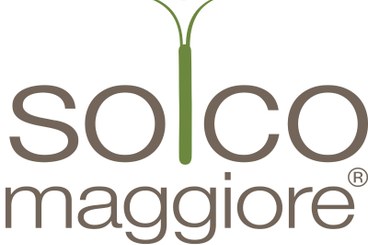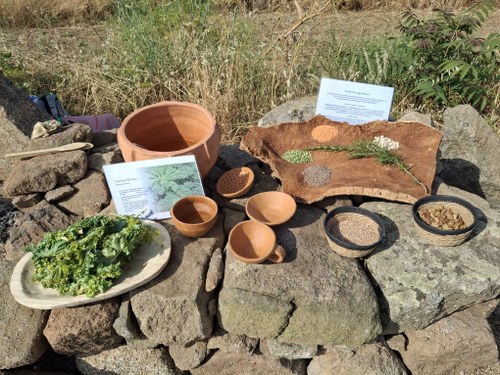
Bio.Arch.
“Bio.Arch. – Biodiversity and Archaeology” is a project resulting from a collaboration between the Department of History, Culture and Civilization (University of Bologna) and the OP Solco Maggiore.

ABOUT THE PROJECT
“Bio.Arch. – Biodiversity and Archaeology”
“Bio.Arch. – Biodiversity and Archaeology” is a project resulting from a collaboration between the Department of History, Culture and Civilization (DISCI) at the University of Bologna and OP Solco Maggiore. The aim is to reconstruct the history of food and make valuable comparisons with modern food culture. Research and dissemination are at the heart of the project, which, from field studies to scientific analyses of archaeobotanical samples, aims to investigate the relationship between the food habits of ancient communities and those of today, emphasizing the importance of environmental sustainability in a ongoing dialogue between the past and the present.
According to the work carried out in 2024, research is continuing in 2025 in agreement with the directives issued by the European Union and interpreted in the context of “Food Culture Evolution”.
The aim of the project is to reconstruct the paleodiet and methods of food consumption in archaeological contexts, subsequently comparing the archaeological data with contemporary cooking areas and methods. The sites involved in these studies date back to the Bronze Age (between the end of the 3rd and the beginning of the 1st millennium BC / 1850-1100 BC), focusing on settlements located in Romagna, Sicily, and Sardinia, in order to study their social organization and subsistence strategies starting from a single seed. In addition, specific attention is paid to fruit and vegetable species, the pride of OP Solco Maggiore's production.
📍Research location:
The research focuses on the study of botanical and ceramic remains related to food processing from archaeological excavations promoted by the University of Bologna and directed by Professor Maurizio Cattani. The investigations cover an area ranging from Romagna to Sicily and Sardinia, across multiple ecosystems characteristic of the peninsula and the Mediterranean islands. In particular, the Bronze Age settlement of Via Ordiere, Solarolo (RA); the protohistoric village of Mursia in Pantelleria (TP); the protohistoric site of Tanca Manna (NU) and the Eneolithic village of Biriai (NU).
🧪 From excavations to lab analysis:
The project is based on the scientific accuracy of the archaeological investigations. Starting with the stratigraphic excavation of selected areas and the careful recovery of archaeobotanical remains, using the flotation process associated with paleobotanical methodology. There is constant dialogue between fieldwork and laboratory analysis, including morphological study under a stereoscopic microscope to identify and classify the plant species involved. A further examination concerns the paleoenvironmental distribution and comparison with contemporary areas, as well as the examination of organic residues on ancient ceramic material using gaschromatography and mass spectrometry, with the aim of deepening the relationship between past and present.
👥 Interdisciplinar reality:
The name of the project itself, “Bio.Arch. – Biodiversity and Archaeology,” shows the desire to bring together a variety of different skills and areas of research under the same heading, such as Archaeobotany, Experimental Archaeology, Morphometric analysis, Isotopic analysis, and Ancient DNA analysis.
♻️ Sustainability:
The study of organic residues provides valuable information on the subsistence strategies implemented in ancient settlements, allowing us to observe their continuation in today's choices. Furthermore, paleoenvironmental distribution is useful for determining the production area of the plant species that have been discovered, in order to compare it with contemporary production choices. The past and present are not two separate entities, but by recovering ancient knowledge about agricultural exploitation, crop treatment, and food processing methods, it is possible to understand which strategies to adopt today and be more aware.
📚 Food education:
For OP Solco Maggiore, fruit and vegetables represent the convergence of many factors, including the benefits of their consumption, the productive landscape, and their historical and archaeological value. The analysis of the nutritional properties that survive the cooking process allows us to verify the preservation of nutritional and organoleptic values over time, suggesting how effective the techniques used in the past were. These concepts are a valuable resource for re-educating people about a food culture that is attentive to the needs of both the individual and the community, while respecting the environment.
⛏️ Experimental archaeology:
The study of ceramic and plant material from archaeological excavations, combined with the study of food cooking and preservation techniques, finds its perfect synthesis in experimental archaeology. Through the replica of ancient vessels and experimentation with various methods of treating plant species for food purposes, it is possible to gain a thorough understanding of their use in the past, for a constructive and engaging comparison aimed at all types of audiences.
🗣️ Outreach:
Every activity promoted by the Bio.Arch. project aims to enhance and disseminate the results of archaeological research and its link with modern agricultural products for responsible use, as well as the principles conveyed by the research itself: food and environmental sustainability; recovery of tradition through innovation; promotion of the value of scientific research for the protection of the past, which communicates with the present in order to preserve our future.
The Bio.Arch. team!
Everything you need to know about the project's research team:
- Maurizio Cattani: Professore al Dipartimento di Storia Culture Civiltà (Università di Bologna) ed esperto dell'Età del Bronzo.
- Marialetizia Carra: Ricercatrice al dipartimento di Storia Culture Civiltà (Università di Bologna) ed esperta in analisi archeobotaniche.
- Florencia Inés Debandi: Assegnista di ricerca al Dipartimento di Storia Culture Civiltà (Università di Bologna) ed esperta nello studio della gestione delle risorse e dell’alimentazione.
- Sara Malavasi: Assegnista di ricerca al Dipartimento di Storia Culture Civiltà (Università di Bologna).
- Paola Iacono: Studentessa della Scuola di Specializzazione in Beni Archeologici dell'Università di Bologna e collaboratrice.